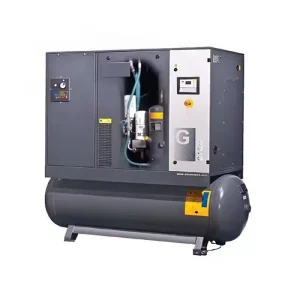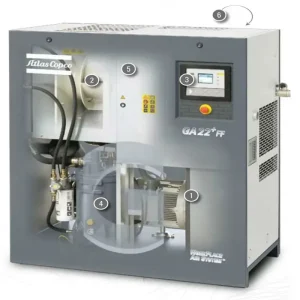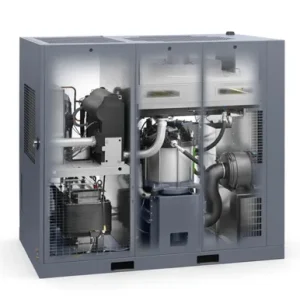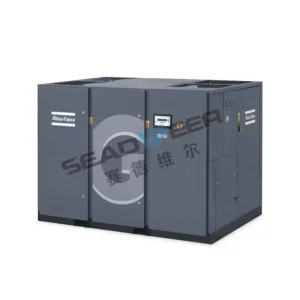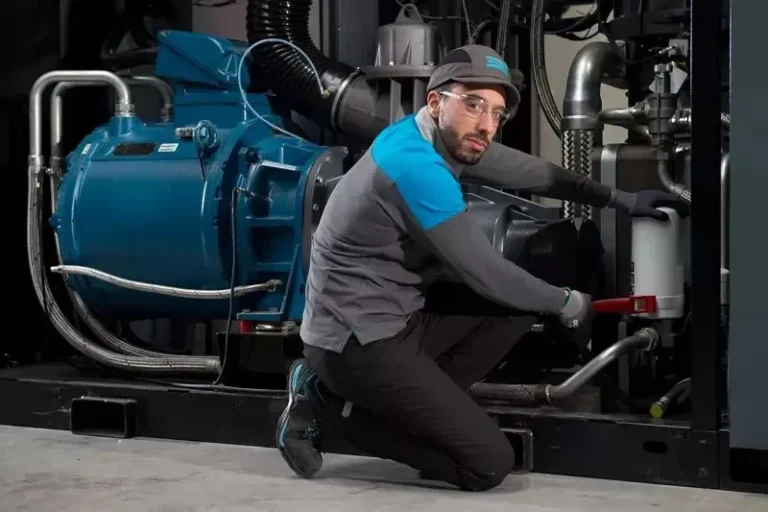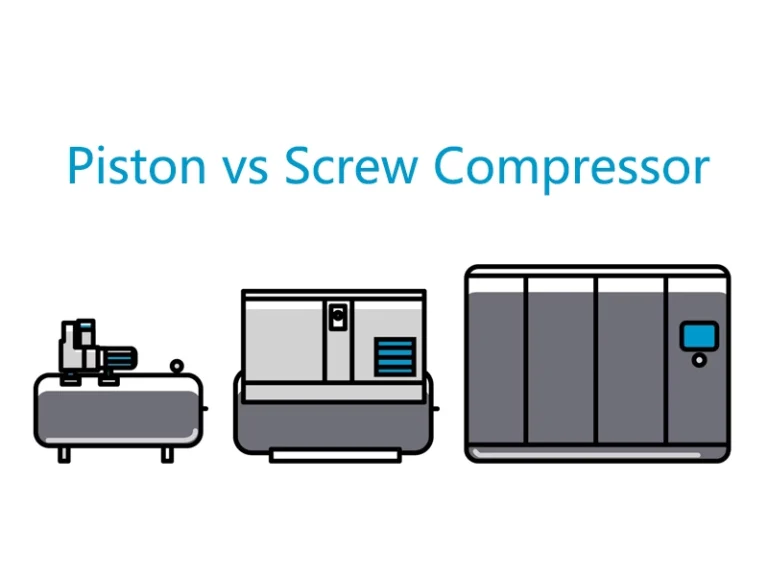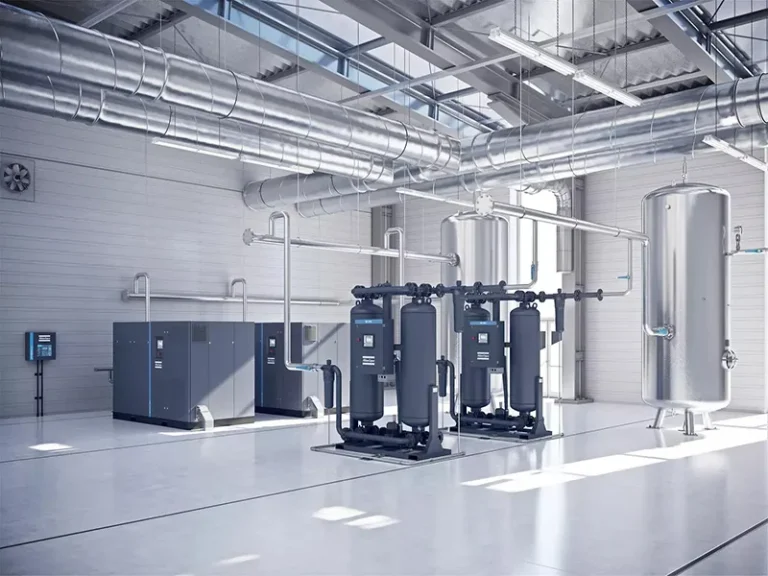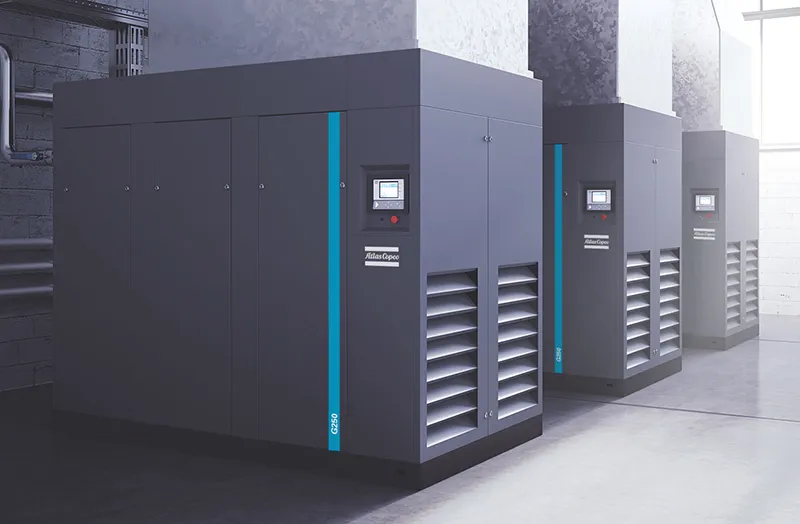
Contents
1. Executive Summary
Optimizing compressed air System is crucial for reducing operational costs and ensuring continuous production. This article explores key strategies to enhance system efficiency and uptime, focusing on leak management, pressure optimization, maintenance planning, and air filtration. By effectively implementing these strategies, industrial facilities can significantly reduce energy consumption and associated costs while minimizing unplanned downtime. It is estimated that energy costs for air compressor systems can be reduced by up to 60% through optimization measures. Improvements in efficiency and increased system uptime are closely linked, jointly contributing to enhanced productivity.
2. Introduction: Importance of an Efficient and Reliable Compressed Air System
Compressed air serves as a versatile power source widely used across various industries, such as operating pneumatic tools and machinery and supporting automation in manufacturing. Applications range from printing presses and cleaning equipment in the printing industry to sealing machines in food packaging. Pressure requirements vary significantly, from as low as 14 PSI to over 6000 PSI. However, running compressed air systems consumes substantial energy, sometimes accounting for 30% or more of a plant’s total electricity usage. Due to its inherently low energy conversion efficiency, only a small fraction of the energy used to produce compressed air is converted into useful work, making compressed air one of the most expensive energy sources in a facility. Therefore, optimizing compressed air system energy efficiency (reducing waste and consumption) and uptime (maximizing operational availability) is critical for improving profitability and productivity. A typical compressed air system may operate at an overall efficiency as low as 10-15%, highlighting significant opportunities for improvement.
3. Understanding Energy Consumption in Compressed Air Systems
The energy conversion efficiency of a compressed air system is typically low, with only 10% to 20% of the energy used ultimately transformed into useful work. Most of the energy consumed during compression—estimated at 80% to 90%—is lost as heat. On average, an industrial compressed air system requires about 0.5 kilowatt-hours (kWh) of electricity to produce one cubic meter of compressed air at 7 bar. Research from the U.S. Department of Energy (DOE) indicates that more than half of industrial compressed air systems have opportunities for significant energy savings through relatively low-cost improvements. In fact, a typical manufacturing plant can reduce compressed air energy consumption by approximately 17% by implementing energy-saving measures with a payback period of three years or less. Since up to 90% of input energy may be wasted, the importance of optimization efforts is further emphasized.
4. Strategies to Maximize Energy Efficiency
4.1. Effective Leak Management
Compressed air leaks are a major source of energy waste, accounting for 20% to 30% of compressor output in a typical facility, and in poorly maintained systems, this figure can reach up to 80%. Even small leaks can lead to significant financial losses. For example, a 1/16-inch leak at 100 PSIG can result in an annual cost of over $1,200. The most effective method for detecting leaks is using ultrasonic leak detectors, which identify high-frequency hissing sounds associated with air leaks. Conducting regular compressed air leak surveys—ideally every six to twelve months—is crucial for identifying and addressing new leaks that may develop over time. Following the Pareto principle, repairing the most significant 20% of leaks can eliminate 80% of total compressed air leakage, providing an efficient approach to energy savings. A well-maintained compressed air system should aim to keep total leakage below 10% of compressor output.
| Leak Diameter (inches) | Leakage (CFM) | Annual Cost (at $0.05/kWh) | Annual Cost (at $0.07/kWh) | Annual Cost (at $0.10/kWh) | Annual Cost (at $0.12/kWh) |
|---|---|---|---|---|---|
| 1/64 | 0.41 | $144 | $202 | $289 | $347 |
| 1/32 | 1.6 | $561 | $785 | $1122 | $1346 |
| 1/16 | 6.5 | $2280 | $3192 | $4560 | $5472 |
| 1/8 | 26 | $9126 | $12776 | $18252 | $21902 |
| 1/4 | 104 | $36504 | $51106 | $73008 | $87609 |
4.2. Optimizing System Pressure
Operating a compressed air system at a pressure higher than necessary increases energy consumption and operational costs. A widely accepted rule of thumb is that reducing compressor discharge pressure by 2 PSI lowers energy consumption by approximately 1%. Thus, a 10% reduction in system pressure can yield around 5% energy savings. Lowering overall system pressure not only reduces the energy required for compression but also minimizes the amount of air lost through existing leaks. Implementing pressure regulators at usage points allows the system to operate at a lower overall pressure while ensuring each tool and machine receives the required pressure. Variable speed drive (VSD) compressors offer significant energy savings by adjusting motor speed to match fluctuating compressed air demand, achieving more stable system pressure and reducing energy consumption by 20-50% compared to traditional fixed-speed compressors.
4.3. Implementing Proper Maintenance Plans
Establishing and adhering to a regular maintenance schedule is crucial for maintaining optimal performance and maximizing energy efficiency. Most plants can easily achieve 10-20% energy savings in compressed air systems by performing routine maintenance tasks such as fixing air leaks, lowering pressure, and replacing clogged filters. Key maintenance tasks directly affecting energy efficiency include regular inspection and replacement of air filters, ensuring proper operation of condensate drains, optimizing operating pressure, and continuously checking for and repairing air leaks. Even a minor 2 PSI pressure drop caused by a clogged filter can reduce compressor efficiency by approximately 1%, emphasizing the importance of filter maintenance.
4.4. The Critical Role of Air Filtration
Air filters are essential components in compressed air systems, designed to remove contaminants such as dust, dirt, oil mist, moisture, and vapors. Different types of filters serve specific purposes:
- Particulate filters remove dust and solid particles with up to 99.9999% efficiency.
- Coalescing filters capture oil and water aerosols, removing particles as small as 0.01 microns at 99.999% efficiency.
- Activated carbon filters eliminate odors and vapors, with some capable of adsorbing up to 99.9999% of oil vapors.
Clogged filters cause pressure drops, forcing compressors to work harder and consume more energy. A 10 PSIG pressure drop increases compressed air system energy costs by 5%, and every 1 PSI pressure drop reduces compressor brake horsepower by 0.5%. Regular filter replacement based on manufacturer recommendations or pressure drop monitoring is essential for maintaining air quality and energy efficiency.
4.5. Exploring Heat Recovery Options
Industrial air compressors convert most of the electricity they consume—typically 80% to 90%—into heat as a byproduct of compression. Well-designed heat recovery systems can capture and reuse 50% to 90% of this waste heat for heating air or water within the facility, resulting in significant cost savings. For instance, a 100 HP air compressor operating at full load for most of the year can save approximately $4,100 annually in natural gas costs by recovering 50% of its heat loss for process water heating. Heat recovery systems often have a short payback period, sometimes less than a year, due to substantial energy cost reductions.
5. Strategies to Maximize System Uptime
5.1. Establishing a Preventive Maintenance Plan
A well-structured preventive maintenance plan maximizes uptime by proactively identifying and addressing potential issues before they lead to unexpected failures and operational disruptions. Key elements include regular inspections, scheduled oil changes and filter replacements, proactive leak detection, routine belt and hose wear assessments, and ensuring the proper function of safety systems. Implementing a comprehensive preventive maintenance program has been shown to yield significant ROI, with one study reporting a return of up to 545%.
5.2. Ensuring Proper Air Filtration
Clean compressed air protects downstream pneumatic equipment from contaminants that cause corrosion, clogging, and accelerated wear. In industries where compressed air contacts products or processes, such as food and pharmaceutical manufacturing, proper filtration is critical for preventing contamination and ensuring product quality. One case study reported a 40% reduction in tool maintenance costs and a 20% decrease in downtime after upgrading to high-efficiency air filters.
5.3. Using High-Quality Components and Backup Systems
Using genuine air compressor parts ensures long-term system reliability. Low-quality or non-OEM parts may cause leaks and pressure drops, leading to system inefficiencies and premature failures. Facilities that require a continuous, stable compressed air supply should implement backup compressor systems to provide redundancy and prevent production interruptions during scheduled maintenance or unexpected compressor failures.
6. Conclusion
Maximizing the efficiency and uptime of air compressor systems requires a comprehensive approach, focusing on leak management, pressure optimization, proper maintenance planning, and effective air filtration. Implementing these strategies not only reduces costs and energy consumption but also enhances productivity and sustainability. Industrial facilities should take a proactive approach to compressed air system management to achieve long-term performance improvements and cost savings.
7.References
- Oransi. “What is a HEPA Filter?”
- Compressed Air and Gas Institute (CAGI). “Working with Compressed Air.”
- U.S. Department of Energy (DOE). “Improving Compressed Air System Performance: A Sourcebook for Industry.”
- Atlas Copco. “Why compressed air leak detection matters.”
- Donaldson. “Filter Ecosystem: Energy Consumption.”
Related Products
-
Atlas Copco Air Compressor G-Series
$8,000.00 – $10,000.00 -
Atlas Copco Air Compressor GA11+ – 30 FF
$880.00 – $1,800.00 -
Atlas Copco Air Compressor GA110VSD
$6,800.00 – $10,000.00 -
Atlas Copco Air Compressor GA132
$6,800.00 – $10,000.00


